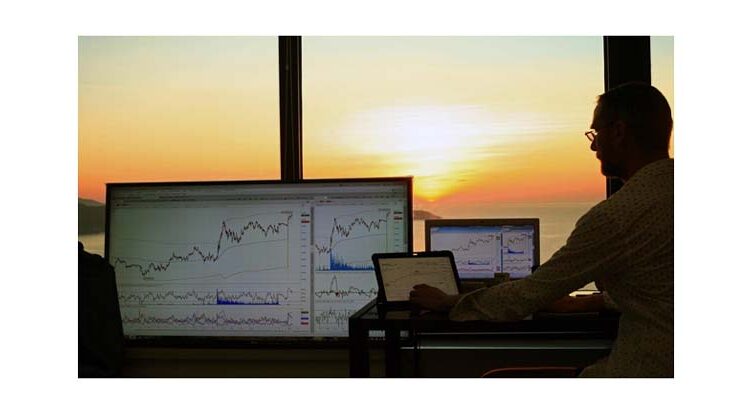In Nigeria’s rapidly evolving financial market, traders are increasingly exploring innovative approaches to diversify their investment portfolios. One prominent trend is the adoption of multi-asset dashboards, advanced platforms that allow traders to track and manage various asset classes from a single interface. With the volatility and frequent fluctuations in the value of the Nigerian naira, utilising a diversified approach through a multi-asset dashboard offers a strategic advantage, allowing traders to spread risks and capitalise on broader market opportunities.
HFM and similar multi-asset dashboard platforms offer significant advantages by providing easy access to comprehensive market data across currencies, commodities, equities, and indices. This convenience enables traders to quickly make informed decisions, particularly when trading currency pairs involving the naira. Utilising platforms like HFM allows traders to gain real-time insights and detailed analytics, enhancing their ability to effectively manage risks and promptly capitalise on profitable trading opportunities.
Advantages of Multi‑Asset Trading Dashboards in Nigeria
Multi-asset dashboards offer Nigerian traders enhanced control over their investments, providing a consolidated view that is instrumental in formulating strategies tailored to market fluctuations. In a market characterised by economic volatility and currency instability, having access to a holistic perspective is crucial. Traders can swiftly shift between assets to mitigate risks and maximise returns, particularly when currency values, such as the naira, fluctuate sharply due to economic policies or external shocks.
Furthermore, the integration of advanced analytical tools within these dashboards equips traders with predictive insights and market sentiment analyses. This predictive capability is especially vital in Nigeria, where economic indicators such as inflation, monetary policy changes, and foreign exchange restrictions frequently impact trading decisions. Accurate analytics help traders preempt market shifts, strategically positioning themselves ahead of trends.
Diversifying Naira Investments Through Multiple Asset Classes
Diversification is fundamental to successful trading, especially in Nigeria, where economic unpredictability often influences investment outcomes. By incorporating multiple asset classes into their trading strategies, such as equities listed on the Nigerian Exchange Group (NGX), commodities like crude oil, gold, and agricultural products, or international indices, traders reduce their dependency on the performance of the naira alone.
A practical example of diversification could involve combining currency trading with commodity trading. As Nigeria heavily depends on crude oil, a multi-asset dashboard allows traders to manage naira-related risk by simultaneously investing in commodities whose prices often move inversely to currency fluctuations. This balanced approach reduces exposure to volatility specific to the naira, stabilising the overall portfolio.
Utilising Technology to Enhance Trading Efficiency
With technological advancement, multi-asset dashboards in Nigeria have evolved significantly. These platforms now include sophisticated algorithms and automated features that assist traders in managing multiple positions effectively. Automation minimises human error and optimises trading decisions, enhancing profitability in the long term.
For Nigerian traders, particularly, technology-driven dashboards allow instant reaction to market news, especially important in a market influenced by rapid policy changes. Timely execution of trades significantly improves profitability, especially in volatile markets where minutes or even seconds can drastically impact trading outcomes.
Risk Management Strategies with Multi‑Asset Dashboards
An essential component of a multi-asset dashboard is robust risk management. Nigerian traders must navigate risks associated with fluctuations in the naira, political uncertainties, and shifts in monetary policies. Multi-asset dashboards support traders by offering features like stop-loss orders, limit orders, and comprehensive risk analytics. These tools are crucial in protecting investments from sudden market movements, particularly in environments susceptible to swift changes due to external or internal economic developments.
Here are a few key risk management features typically found in multi-asset dashboards:
- Stop-loss and Take-profit tools: Essential for automatic risk management, allowing traders to predetermine exit points to protect gains or minimise losses.
- Real-time monitoring: Provides immediate alerts about changes affecting asset prices, crucial for rapid adjustments to trading positions.
- Portfolio analytics: Offers detailed insights into portfolio diversification and risk exposure, enabling informed strategic adjustments.
The Future of Multi‑Asset Trading in Nigeria
As Nigeria continues to integrate technology into financial services, the use of multi-asset dashboards will likely become even more widespread. Increased financial literacy, supported by accessible and intuitive platforms, encourages broader participation from retail investors and traders who previously avoided complex markets.
Furthermore, with regulatory frameworks becoming clearer and more investor-friendly, multi-asset dashboards will likely attract greater interest from Nigerian traders. Increased participation will not only diversify trading strategies but also contribute to the overall maturity and depth of Nigeria’s financial markets.
In conclusion, multi-asset dashboards represent a significant step forward for Nigerian traders aiming to diversify their strategies beyond naira-centric trading. Leveraging these advanced platforms, traders gain a competitive edge through superior analytics, diversified investment options, and robust risk management tools, shaping a more resilient financial landscape.





